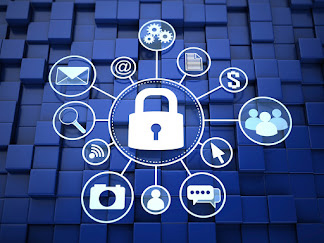DIFFRENCE BETWEEN ANTIVIRUS SOFTWARE AND MALWARE REMOVAL SOFTWARE
Antivirus software is primarily designed to prevent infections, but also offers the ability to remove malware from an infected computer. Stand-alone malware removal software can detect and remove malware from a computer or device when the already installed product cannot handle it. Since the purchase of a computer is one of the largest investments in a home or business, it is essential to protect it against viruses.
While running a virus scan plays an essential role in protecting your computer, malware removal software is also necessary to optimally protect your computer against various viruses and other types of threats. The combined use of anti-virus software and malware removal software can provide the best possible protection against malware and other forms of threats.Antivirus Software vs. Malware Removal Software: A Major
Difference
Antivirus software is primarily used for prevention,
downloading files containing viruses to your computer. It also prevents their
activation, if downloaded to your computer and placed in memory or in a file.
If the infected file is not downloaded, no problem. If it is, but the antivirus software
reports it as malware and prevents it from being activated, your system will
not be damaged - even if the infected file still needs to be checked and
removed.
When Should You Use Malware Removal Software?
Suppose an infected file is downloaded and then executed, thus
activating the virus. This usually happens accidentally, such as after clicking
on a corrupted URL link or opening an infected attachment in an email.
Some antivirus software may include rudimentary tools for
removing active viruses, but today's malware is sophisticated. They hide in the
infected computer and can be reactivated later. Therefore, these rudimentary
tools can be partially ineffective.
Malware removal software provides tools specifically designed
to remove such programs from an infected computer, in the event that a virus
escapes the verification of anti-virus software. Malware includes active
viruses, controlled viruses, and inactive malware that may be hidden on the
infected computer.
Antivirus and malware removal software, smart protection
Additional malware removal tools are needed because these
programs can hide, reappear, spread, and re-infect the system, even if an
identified file containing a virus is flagged and deleted by the antivirus
program.
Malware can exist in different forms: file, hidden or partially
corrupted file; they can conceal the mechanisms of activation of the virus, in
particular in terms of launching or element of the registry. In the worst-case
scenario, the malware works for a third party who seeks to steal valuable
information such as bank account numbers or personal identifiers without
attracting attention. With modern malware, deleting a single infected file is
usually not enough. Better to run checks in multiple locations and use virus
scanning techniques to completely remove the malware.
There are many free antivirus and malware detection offers
available and can be very valuable up front if you implement security measures
on your home computers. Some free tools can report if your computer is infected
and provide you with a full report of the results, but they may not be able to
remove identified viruses. So ultimately you will want to purchase anti-virus
software and malware removal software to effectively preserve your IT
investment.




Comments
Post a Comment